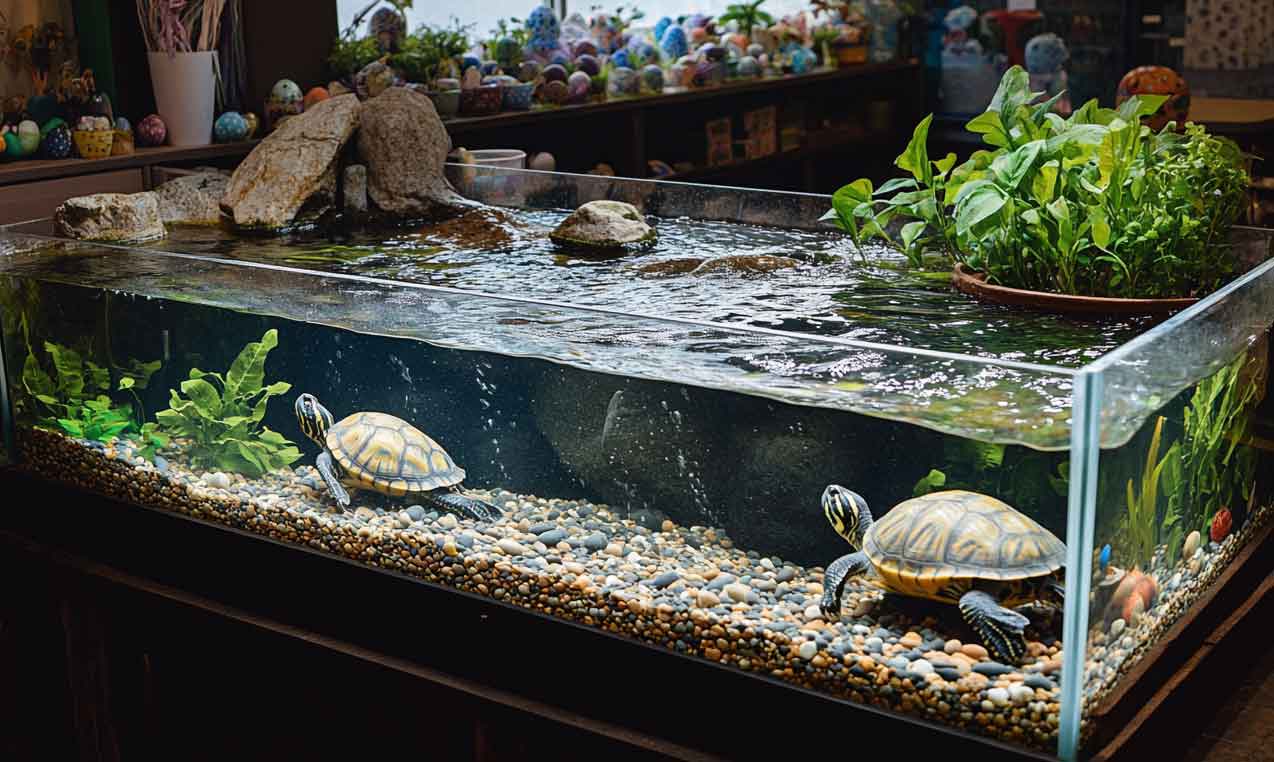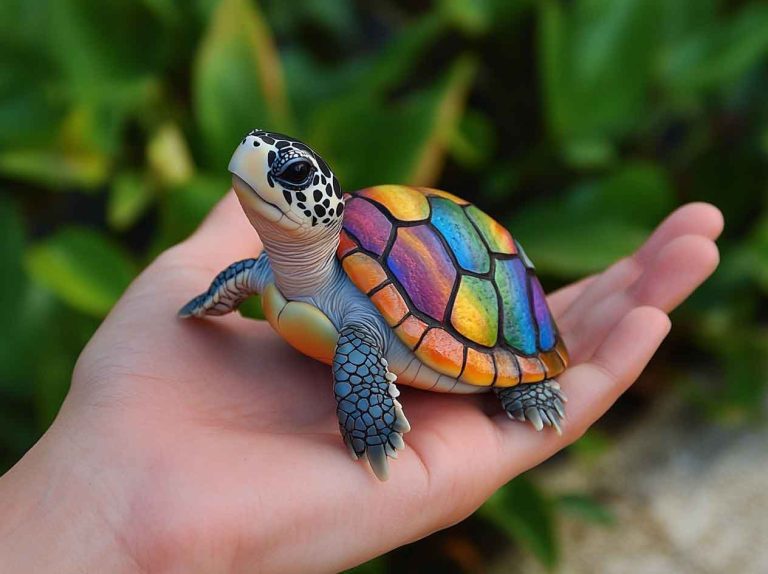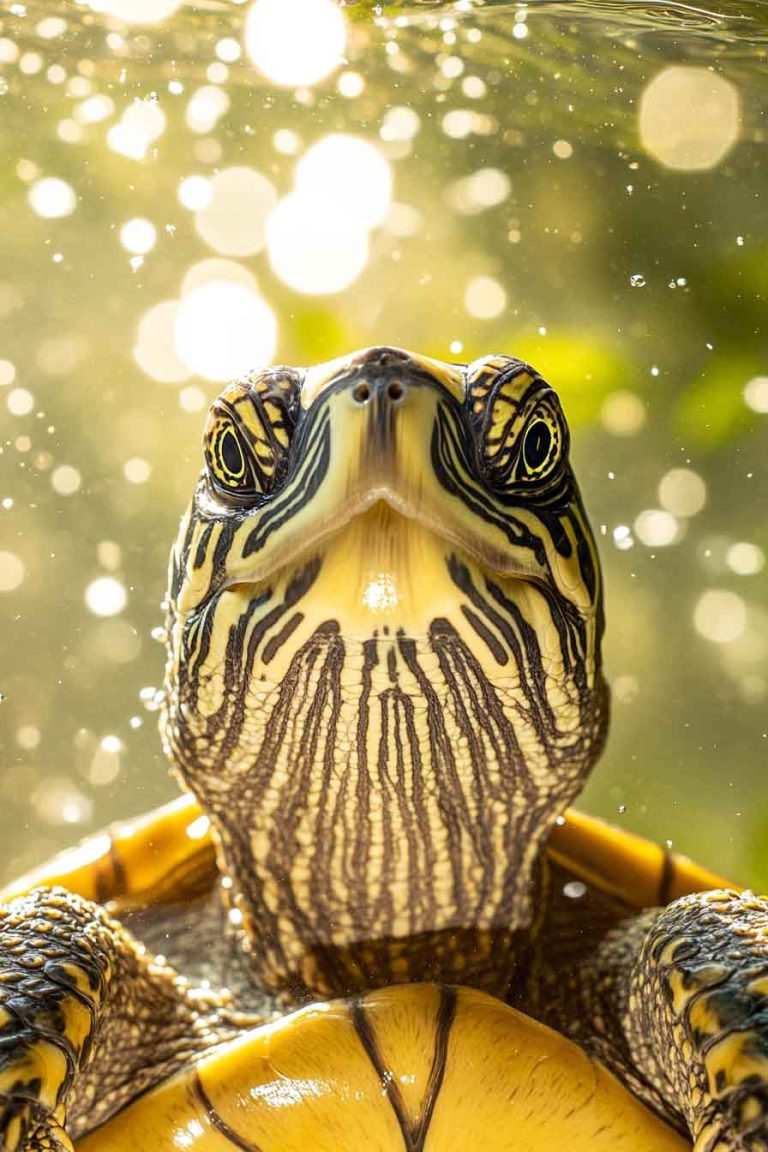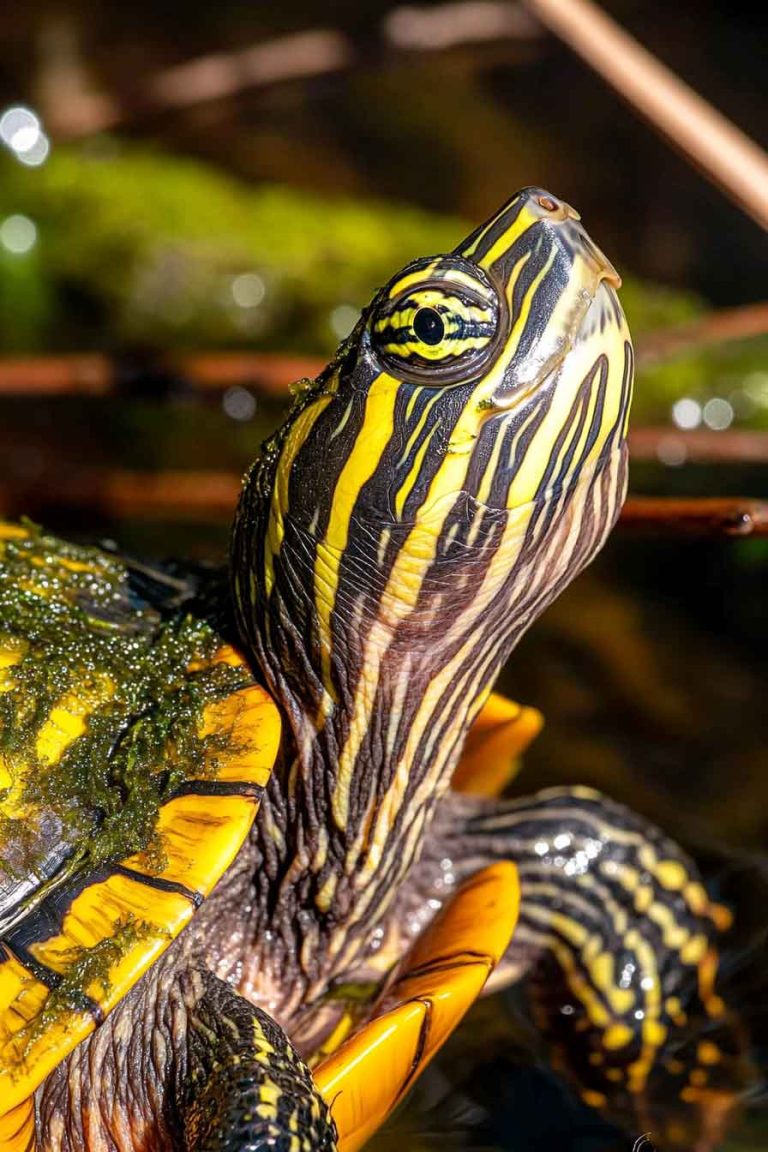Do Turtles Need a Water Heater? Temperature Guide for Healthy Turtles
Turtles are fascinating creatures, and if you have one as a pet, you might be wondering if a water heater is necessary for their habitat. In this article, we’ll explore whether turtles need a water heater, why temperature is important for them, and how to maintain the right environment for your shelled friend. By the…
Turtles are fascinating creatures, and if you have one as a pet, you might be wondering if a water heater is necessary for their habitat. In this article, we’ll explore whether turtles need a water heater, why temperature is important for them, and how to maintain the right environment for your shelled friend. By the end, you’ll have a clear understanding of how temperature affects your turtle’s health and well-being.
Why Temperature Matters to Turtles
Turtles are ectothermic, which means they rely on their external environment to regulate their body temperature. Unlike mammals that can generate their own body heat, turtles need to stay in the right temperature range to stay healthy. The temperature of the water in their habitat plays a huge role in their metabolism, digestion, and overall comfort. Let’s dive into the reasons why temperature is so crucial for turtles.
Metabolism and Digestion
Turtles’ metabolisms are directly influenced by temperature. When the water temperature is too cold, their metabolic rate slows down significantly. This can affect their ability to digest food properly and can lead to various health problems. On the other hand, if the water is too warm, it can speed up their metabolism and cause them to become overly active or stressed.
Immune System and Health
Temperature also plays a key role in a turtle’s immune system. A turtle kept in water that is too cold may become more susceptible to infections or illnesses, while a turtle kept in water that is too warm may experience stress and even overheating. Finding the right temperature is essential for keeping your turtle’s immune system strong and its body functioning properly.
Behavior and Activity Level
Turtles are more likely to be active when the water temperature is within a comfortable range. A well-heated tank will encourage your turtle to swim, bask, and explore, whereas a cold tank may cause your turtle to become lethargic or inactive. Turtles also need warmth to bask in, and they rely on both the water and the air to regulate their body temperature effectively.
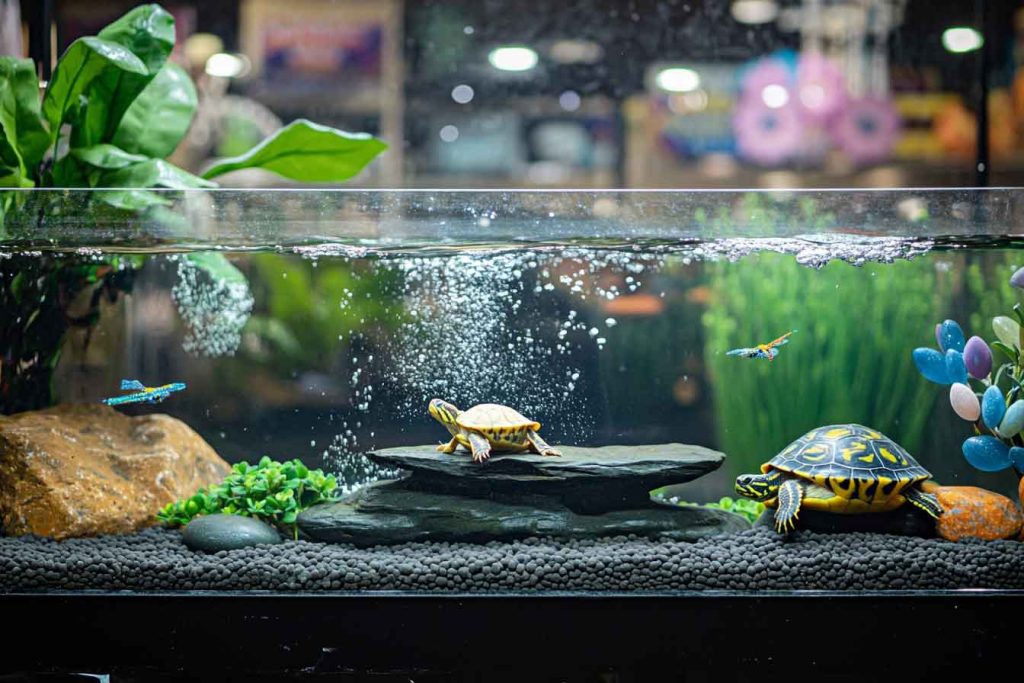
Do Turtles Need a Water Heater?
While not all turtles require a water heater, most aquatic species do. A water heater ensures that the water remains at a consistent temperature, preventing fluctuations that could stress your turtle. A sudden drop in temperature can cause your turtle to become sluggish, refuse to eat, or even become ill.
The Ideal Water Temperature for Turtles
The ideal water temperature for most aquatic turtles is between 75°F and 85°F (24°C to 29°C). This range promotes healthy digestion, immune function, and activity levels. However, different species of turtles have slightly different temperature preferences, so it’s important to research your specific turtle’s needs.
For example, red-eared sliders and other common aquatic turtles generally thrive in water temperatures of 75°F to 80°F (24°C to 27°C). If you’re keeping a species that prefers cooler waters, like some pond turtles, a slightly lower temperature might be suitable.
Basking Areas and Air Temperature
In addition to having the right water temperature, turtles also need access to a basking area where they can warm up under a heat lamp. The basking area should be kept around 90°F to 95°F (32°C to 35°C), providing a warm spot for your turtle to climb out of the water and soak up some heat.
If you keep your turtle in an enclosure with both water and land areas, make sure the land section has a heat source like a basking lamp. This allows your turtle to regulate its body temperature by choosing where it wants to spend its time.
Water Heater Recommendations
If you’re using a water heater for your turtle’s habitat, make sure it is specifically designed for aquatic reptiles. Aquarium heaters are great for this purpose, but always choose one with an adjustable thermostat so you can fine-tune the temperature to your turtle’s needs. Avoid heaters that can overheat the water, as this could stress your turtle.
Some tanks also come with built-in thermostats that help keep the water within a safe range. These are convenient, but if your turtle’s tank doesn’t have one, consider adding an external thermometer to monitor the temperature.
Signs of Incorrect Temperature
If the temperature in your turtle’s tank is too high or too low, you might notice some changes in their behavior or health. Here are a few signs that the temperature is not quite right for your turtle:
- Lethargy or inactivity: If the water is too cold, your turtle may become lethargic and spend most of its time resting at the bottom of the tank.
- Loss of appetite: Turtles may stop eating if the temperature is too low, as their metabolism slows down. Likewise, excessively high temperatures can cause stress, making them lose interest in food.
- Breathing problems: Cold water can also make it harder for turtles to breathe properly, leading to respiratory issues.
If you notice any of these signs, check the water temperature immediately and adjust it accordingly.
How to Maintain the Right Temperature for Your Turtle
Now that we understand the importance of temperature for turtles, let’s discuss how you can maintain the ideal conditions in their tank. Keeping the right temperature isn’t just about having a heater; it’s also about monitoring the environment and making adjustments as needed.
Using a Water Heater
As mentioned earlier, using a water heater is one of the best ways to maintain a consistent temperature in your turtle’s tank. But simply turning on a heater isn’t enough. You’ll need to monitor the water regularly to ensure it stays within the ideal range.
Here are some tips for using a water heater:
- Choose the right heater: Make sure the heater is suitable for the size of your turtle’s tank. A small tank won’t need a high-power heater, but a larger tank will require something more powerful.
- Adjust the temperature gradually: If you’re adding a heater to the tank for the first time, start with a low temperature and gradually increase it to avoid shocking your turtle.
- Use a thermostat: A thermostat is crucial to prevent the heater from overheating the water. Some heaters come with built-in thermostats, but you can also buy separate ones to keep the water temperature within a safe range.
- Place the heater properly: Make sure the heater is fully submerged in the water, and place it near the filter to help circulate the heated water throughout the tank.
Basking Area with Heat Lamp
In addition to heating the water, your turtle will need access to a basking area with a heat lamp. This helps regulate their body temperature, allowing them to switch between the cool water and warm air as needed.
To set up a basking area:
- Position the heat lamp: Place the heat lamp above the basking area, aiming for a temperature of 90°F to 95°F (32°C to 35°C) on the basking platform. You can use a regular UVB bulb to provide light as well as warmth.
- Monitor the air temperature: The air temperature in the basking area should be warmer than the water. Check the temperature regularly with a thermometer to make sure it’s within the right range for your turtle.
- Provide space for basking: Make sure the basking platform is large enough for your turtle to climb onto easily. Turtles love to bask and soak up the heat, so they need a safe and accessible space to do so.
Avoiding Temperature Fluctuations
Fluctuating temperatures can stress your turtle, so it’s important to maintain a stable environment. Sudden changes in water or air temperature can make your turtle feel uncomfortable and disrupt their natural behavior.
Here’s how to keep temperatures stable:
- Keep the tank away from drafts: Avoid placing the tank near windows or air conditioning vents, as this can cause temperature fluctuations.
- Invest in a reliable heater: Choose a water heater that’s known for its durability and reliability. This will ensure the water stays at a steady temperature without sudden changes.
- Use a backup power supply: If you live in an area with frequent power outages, consider investing in a backup power supply for your water heater. This will ensure your turtle’s habitat remains at the right temperature, even during blackouts.
Why Consistency Matters
Consistent temperatures are key to your turtle’s health and well-being. Just like humans, turtles need a predictable environment to feel secure. Maintaining the right water and air temperature will keep your turtle comfortable, encourage natural behaviors, and support overall health.
If you’ve noticed your turtle acting stressed, lethargic, or losing its appetite, it could be a sign that the temperature is off. It’s important to check the temperature regularly and make adjustments as needed to keep your turtle happy and healthy.
When Is It Necessary to Adjust the Temperature?
In certain situations, you might need to adjust the temperature for your turtle. Here are a few scenarios when temperature adjustments may be necessary:
Winter Brumation
During the winter months, some species of turtles may enter a period of brumation, similar to hibernation. During this time, turtles become less active and may spend much of their time at the bottom of their tank. Brumation typically occurs in response to cooler temperatures.
If your turtle is entering brumation, you may want to lower the water temperature slightly to match their natural behavior. However, don’t make the water too cold—aim for a range that encourages brumation but doesn’t put your turtle in danger.
Illness or Stress
If your turtle is sick or stressed, adjusting the temperature can help provide relief. Warmer water can help boost circulation and metabolism, encouraging healing. But be careful not to overheat the water—extreme temperatures can cause additional stress and harm your turtle.
Conclusion:
In conclusion, temperature plays a vital role in your turtle’s health and well-being. Whether it’s water temperature or basking area temperature, maintaining the right conditions is key to ensuring your turtle thrives. Using a water heater, monitoring temperature fluctuations, and providing a proper basking area are all important steps in creating an ideal environment for your pet turtle.
Here are some quick tips to remember:
- Ideal Water Temperature: Keep the water temperature between 75°F and 85°F (24°C to 29°C) for most aquatic turtles.
- Basking Area: Ensure the basking area is between 90°F and 95°F (32°C to 35°C) for optimal warmth and health.
- Regular Monitoring: Check the water and air temperature regularly to make sure they stay stable and consistent.
- Use Proper Equipment: Invest in a reliable water heater and thermostat to maintain a consistent environment.
- Signs of Stress: Be on the lookout for signs that your turtle is uncomfortable, such as lethargy, loss of appetite, or excessive hiding.
By providing your turtle with the right temperature, you’ll help them stay healthy, active, and comfortable. Remember that turtles are sensitive to their environment, and taking the time to set up the perfect habitat will pay off in the long run. Whether you’re a new turtle owner or an experienced one, the right temperature is key to keeping your shelled friend happy and healthy.

